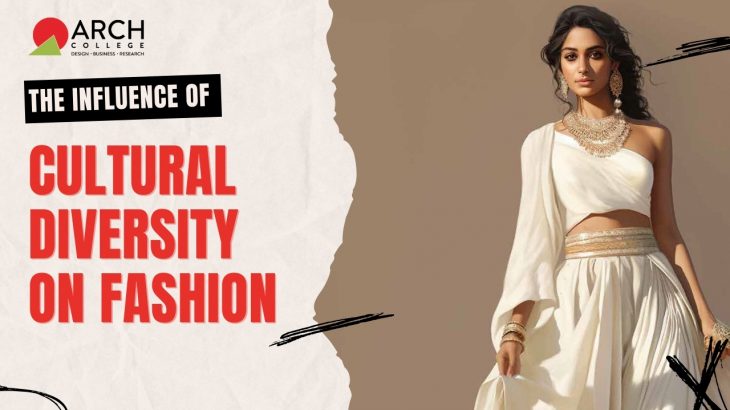Culture defines who we are as a community. Culture shapes our language, our customs, and even our clothing choices It infuses every aspect of society with meaning and identity. Fashion and culture are closely connected, impacting and inspiring each other by continuously exchanging ideas and styles. As society moves forward, its culture shifts, and fashion moves along, showing what’s popular.
Fashion thrives on relevance and resonance with its audience. From traditional garments worn during religious ceremonies to streetwear styles that reflect urban youth culture, fashion reflects the diversity and dynamism of cultural expressions from across the globe. Think about how hip-hop culture in the 1980s influenced not just music, but also fashion, with its baggy clothes and gold chains becoming iconic symbols of the era. Culture influences fashion, but fashion can also influence culture by shaping how people express themselves and perceive the world around them.
How does India’s cultural diversity inspire the latest fashion designs?
Cultural diversity in India is both, rich and complex, reflecting its long history and varied geography. With over 1.3 billion people belonging to numerous ethnicities, languages, religions, and traditions, India is a vibrant tapestry of cultures. From the colourful festivals celebrated across the country to the diverse cuisines, languages, music, dance forms, and art styles, India’s cultural diversity is celebrated and cherished.
Traditional attire from different regions serves as a perennial source of inspiration, with garments like sarees, salwar kameez, and lehengas often reinterpreted in contemporary fashion. Designers frequently incorporate elements such as intricate embroidery, vibrant hues, and indigenous textiles into their creations, infusing them with a distinctly Indian flair.
Moreover, India’s rich heritage of handloom fabrics, including silk, cotton, and khadi, continues to shape fashion trends, with a growing emphasis on sustainable and eco-friendly practices. Artisans across the country contribute to the preservation and promotion of traditional techniques, adding authenticity and uniqueness to modern designs.
Beyond traditional wear, India’s cultural diversity inspires fusion fashion, where Western silhouettes are infused with Indian motifs, fabrics, and embellishments. This cross-pollination of styles results in innovative and eclectic fashion statements that appeal to both, domestic and international audiences.
Additionally, India’s festivals, celebrations, and rituals provide fertile ground for fashion experimentation, with individuals donning elaborate attire that reflects their cultural heritage. From the intricate drapes of a Bengali saree to the ornate jewellery of a Rajasthani bride, these cultural expressions continuously shape and redefine fashion trends in India.
Fashion from the Entertaintainment Industry
The cultural phenomenon of Indian cinema and television has a profound influence on fashion trends in India, shaping everything from clothing styles to beauty standards and beyond. With its larger-than-life portrayals of characters and extravagant sets, the industry sets the stage for fashion inspiration in the country.
Actors and actresses often become trendsetters, with their on-screen looks and off-screen fashion choices influencing millions of fans. From glamorous, red carpet appearances to iconic outfits in blockbuster movies, celebrities drive consumer preferences and dictate popular fashion trends.
How does fashion change when cultural influences are missing?
When cultural influences are absent from the fashion industry, it loses the colourful array of inspirations that give it depth and diversity. Cultural elements like traditional attire, textile techniques, and aesthetic preferences provide a rich tapestry from which designers draw ideas. Without these influences, fashion trends may become repetitive and less innovative. Additionally, Ignoring cultural trends or failing to adapt to societal standards can lead to a disconnect between fashion offerings and consumer expectations. This can result in clothing that feels out of touch or inappropriate, leading to poor sales and brand reputation damage.
In summary, the relationship between fashion and culture is dynamic and multifaceted, each influencing and shaping the other in profound ways. By welcoming cultural variety, honouring customs, and encouraging thoughtful conversation, the fashion industry has the opportunity to celebrate and amplify the richness of global culture while promoting creativity, inclusivity, and social awareness. By remaining mindful of cultural influences and societal standards, fashion designers can create clothing that not only reflects the zeitgeist but also respects and celebrates the diversity of the communities they serve.
At ARCH, B Des Fashion Design students delve into cultural values that shape fashion while gaining hands-on experience through interactions with artisans, industry visits, and practical projects. Our curriculum emphasizes not only theoretical knowledge but also on practical skills, allowing students to understand the intricacies of cultural influences on fashion firsthand. By engaging directly with artisans and visiting fashion industries, Fashion Design Bachelor Degree students gain valuable insights into the creative process and the global fashion market. If you’re passionate about fashion but uncertain about which Fashion Design Bachelor Degree courses to pursue, don’t wait any longer – come see us today and take the first step towards a bright and fulfilling future in fashion.
